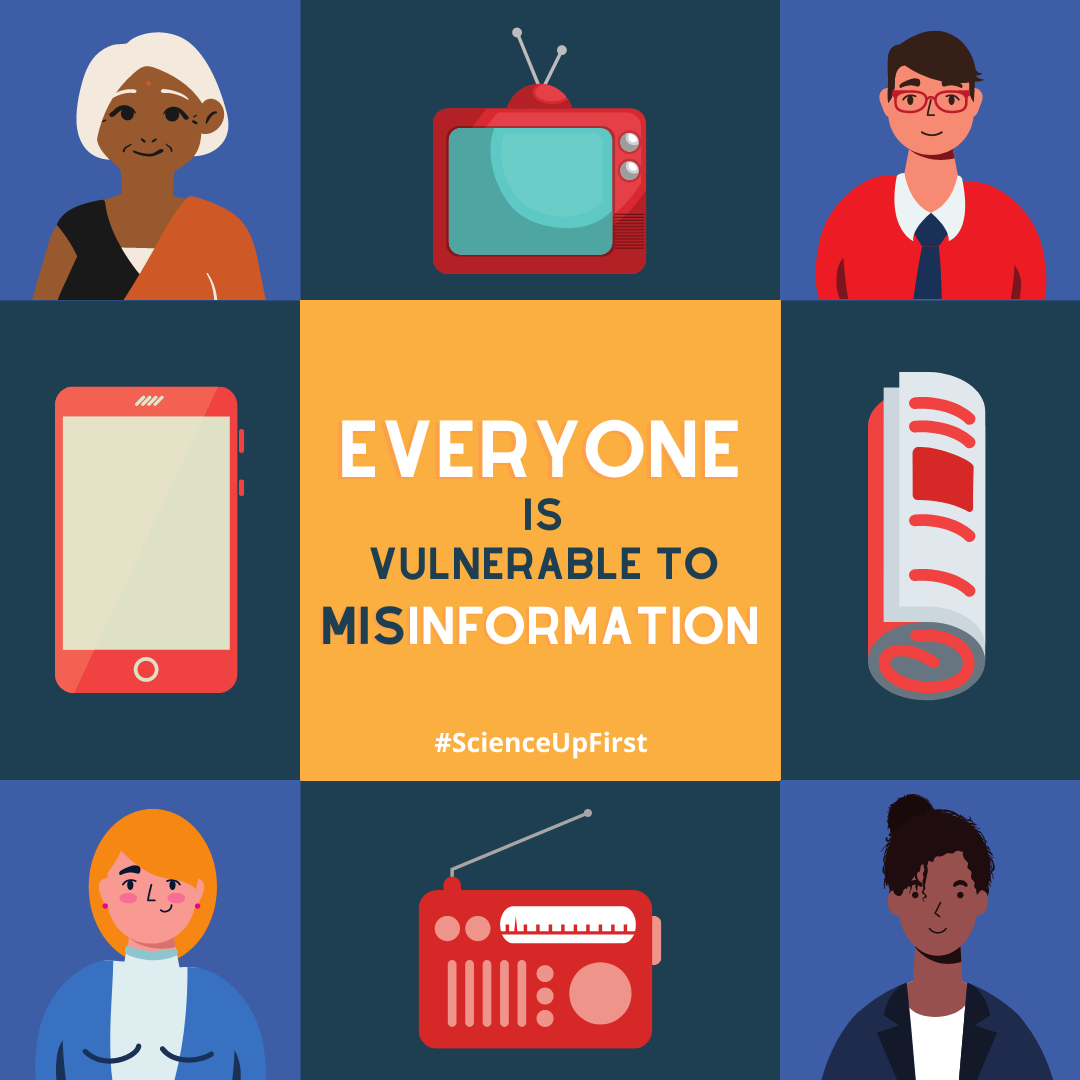
When you picture someone who falls for fake news, who do you see?
It turns out that people of ALL ages around the world are vulnerable to misinformation. While adults 65+ are more likely to share fake news stories on Facebook (1), conspiracy theories are being spread by teens on TikTok (2). A recent survey of over 20,000 Americans found that the younger you are, the more likely you are to believe in false claims about COVID-19 (3).
When it comes to the pandemic, misinformation can be a matter of life and death (4).
The good news is that you can protect yourself against misinformation.
Don’t just debunk, PREbunk (5)! Think about prebunking as vaccinating yourself against misinformation. By learning to identify different types of misinformation and how to address it, you will be more prepared next time you come across an inaccurate claim. Want to practice? Visit mediasmarts.ca/break-fake (6). They have quick quizzes that help you learn how to spot suspicious posts. Keep a lookout for these tactics, the next time you read a post online.
- Less than you think: Prevalence and predictors of fake news dissemination on Facebook
- Why Teens are Falling for Tik Tok Conspiracy Theories
- The State Of The Nation: A 50-State COVID-19 Survey Report #14: Misinformation And Vaccine Acceptance
- Fact-checking as risk communication: the multi-layered risk of misinformation in times of COVID-19
- Inoculating Against Fake News About COVID-19




